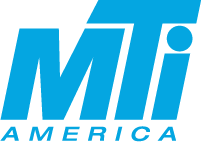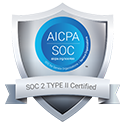AI in Healthcare: Real-World Applications Every Workers’ Comp Professional Should Know

Artificial intelligence (AI) is no longer a futuristic concept—it’s a reality shaping today’s healthcare landscape. From major hospitals to insurance carriers, AI is actively being used to improve patient outcomes, streamline decision-making, and reduce the administrative burden on providers and claims professionals alike.
Understanding how AI is being deployed right now is essential to keeping claims on track, improving recovery timelines, and supporting return-to-work efforts.
AI is Here—and It’s Already Helping
Below are real-world applications of AI being used today across the healthcare and workers’ compensation ecosystems:
Clinical Decision Support in Major Health Systems
Used by: Mayo Clinic, Mount Sinai, Kaiser Permanente
AI is integrated into EHR platforms like Epic and Cerner to help physicians make faster, safer decisions. These tools flag drug interactions, suggest appropriate care pathways, and alert teams to risks such as sepsis or medication errors.
What it means for claims: Faster, more accurate diagnoses and fewer delays in treatment approvals.
AI-Driven Radiology and Imaging
Used by: Mass General Brigham, facilities using Nuance (a Microsoft company)
AI tools like Aidoc analyze X-rays and MRIs to detect fractures, blood clots, or other abnormalities within minutes—helping radiologists prioritize urgent cases.
What it means for claims: Accelerated diagnosis leads to earlier interventions, fewer disputes, and improved return-to-work timelines.
Natural Language Processing (NLP) for Documentation Review
Used by: Over 500 U.S. hospitals via Nuance Dragon Medical One
NLP extracts key details from physician notes, imaging reports, and clinical summaries—reducing the time needed to review complex files.
What it means for claims: Faster access to critical data allows adjusters and NCMs to make informed decisions without delay.
Virtual Triage and Symptom Assessment
Used by: Cleveland Clinic, Johns Hopkins, large employers
AI chatbots such as Buoy Health or Ada Health are guiding injured workers to appropriate care settings—even before speaking to a provider.
What it means for claims: More efficient triage reduces unnecessary ER visits and ensures workers get the right care from the start.
Wearables and Remote Monitoring
Used by: Mount Sinai, UCHealth, rehab programs
AI interprets real-time data from wearable devices and in-home monitors, alerting providers when recovery is off-track.
What it means for claims: NCMs can act early if pain, mobility, or vitals suggest a setback—helping reduce re-injury and costly complications.
Human Expertise Still Matters
While AI is an invaluable tool, it doesn’t replace human experience. It supports it. As an NCM or adjuster, your judgment, empathy, and ability to coordinate care remain central to the recovery journey. AI simply gives you better tools to work smarter and make faster, more informed decisions.
AI is already reshaping how healthcare is delivered and how claims are managed. Embracing these tools—and understanding how they integrate into your workflows—can empower you to deliver better outcomes for injured workers and keep your claims portfolio on the path to resolution.











